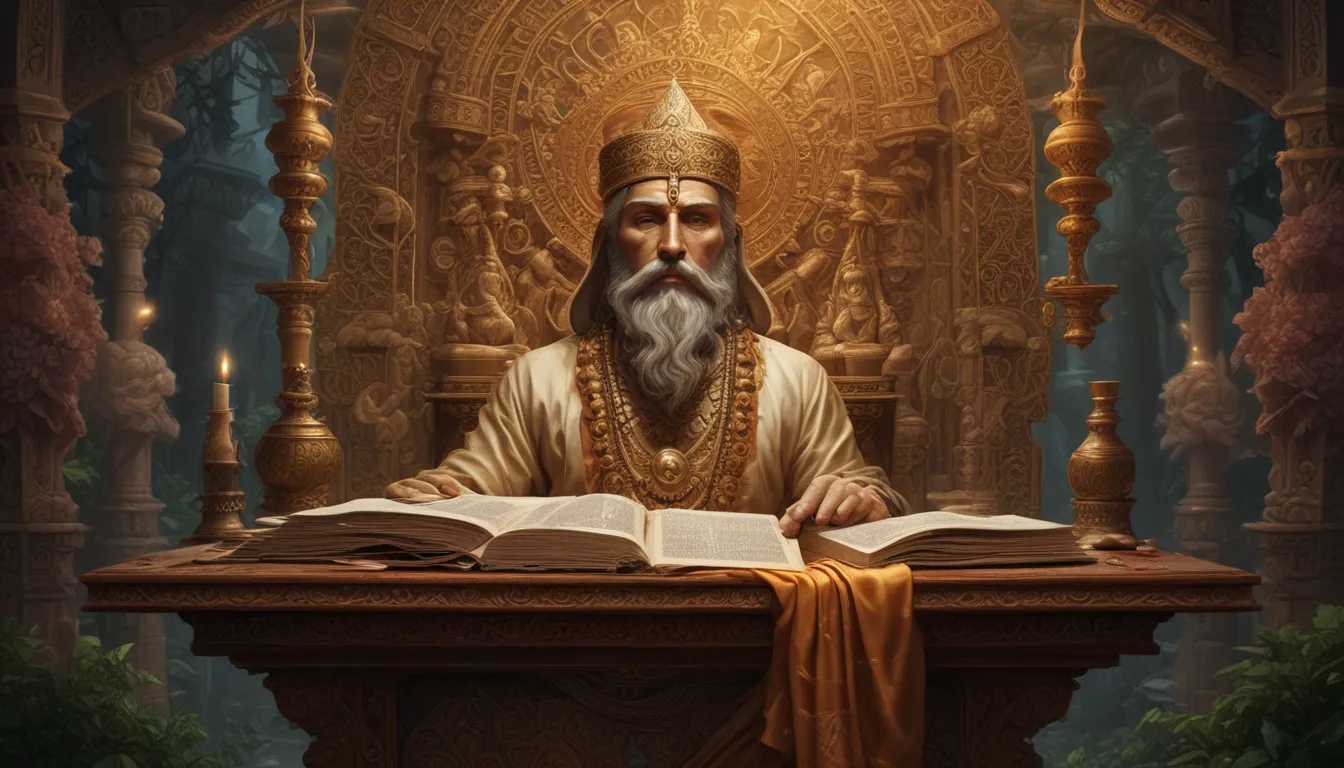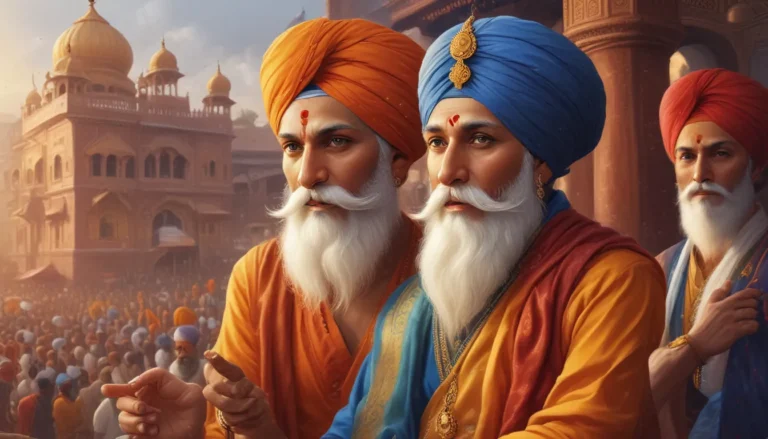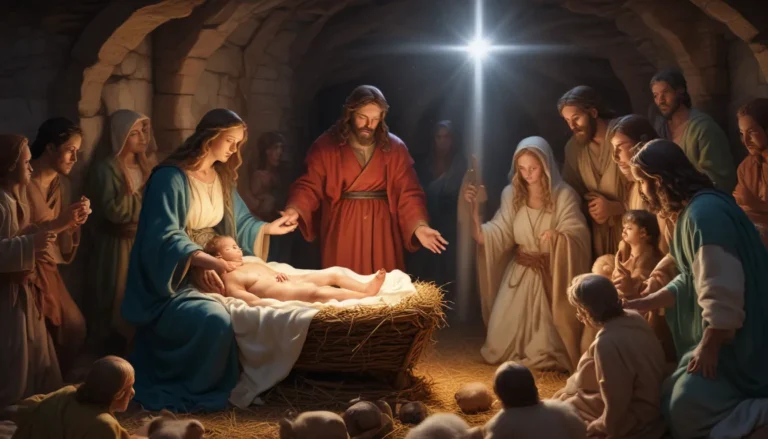The images in our articles may not match the content exactly. They are used to grab your attention, not to show the exact details in the text. The images complement the text but do not replace it.
Welcome to the intriguing world of Mandaeism, a captivating religious tradition that offers a unique glimpse into ancient Mesopotamian spirituality. With a history stretching back over two millennia, Mandaeism, also known as Mandaeanism, holds a rich tapestry of beliefs, rituals, and cultural significance that continue to fascinate scholars and enthusiasts alike. In this detailed guide, we will delve into 12 intriguing facts about Mandaeism, shedding light on its origins, beliefs, rituals, and contemporary status.
Unraveling the Legacy of Mandaeism
Mandaeism serves as the religious foundation of the Mandaean people, an ethno-religious group primarily residing in the marshlands of southern Iraq and southwestern Iran. At the core of Mandaeism lies the belief in being the descendants of Adam, with their prophet, John the Baptist, serving as a central figure in their spiritual journey.
Tracing Back to Ancient Roots
Dating back to the 1st century CE, Mandaeism stands as one of the oldest Gnostic religions known to humanity. Some scholars suggest that Mandaeism predates Christianity, incorporating elements influenced by early Babylonian and Persian religious practices.
Embracing the Power of Water
Water holds a profound symbolic value in Mandaeism, symbolizing spiritual purification and renewal. The act of baptism, conducted in flowing rivers or bodies of water, represents a fundamental rite in cleansing the soul and striving for purity in the eyes of the divine.
The Spiritual Significance of John the Baptist
John the Baptist holds a prominent role within the beliefs of Mandaeism. Far more than a mere precursor to Jesus, Mandaeans view him as a prophet in his own right, imparting divine wisdom and salvation through the sacred act of baptism.
Navigating the Cosmos: The Demiurge and the World of Light
Mandaeism’s cosmology delves into the realms of light and darkness, with a supreme being known as the Great Life presiding over creation. The Demiurge, associated with chaos and darkness, stands as the lesser god responsible for crafting the material world. Mandaeans strive to ascend to the world of light through leading virtuous lives.
Unveiling the Sacred Scriptures: The Ginza Rba
At the heart of Mandaeism lies the Ginza Rba, also known as “The Great Treasure,” a holy text containing hymns, prayers, and teachings that guide Mandaeans in matters of faith, morality, and spirituality.
The Revered Mandaean Priesthood
Mandaeism places a significant emphasis on the roles of the priesthood, tasked with conducting religious rites and overseeing baptisms. Priests act as spiritual guides and intermediaries between the divine realm and the Mandaean community.
Engaging with the Divine: The Ritual of Daily Prayer
Daily prayer forms an integral part of Mandaean spiritual practice, fostering connection with heavenly beings known as the “Shuhilta.” Through prayer, Mandaeans seek guidance, illumination, and divine blessings in their earthly journey.
Symbolism of Light and Darkness
In the intricate tapestry of Mandaeism, light symbolizes purity and the divine realm, while darkness represents chaos and impurity. Mandaeans strive to purify their souls by eradicating darkness and aligning themselves with the luminous world of light.
Deciphering Esoteric Symbols
Mandaeism employs a plethora of esoteric symbols, including the iconic seven-branched candelabrum known as “masbuta,” each carrying profound spiritual significance and serving as visual representations of the Mandaean cosmology and beliefs.
Challenges and Preservation Efforts
Throughout its tumultuous history, Mandaeism has faced persecution, diaspora, and dwindling numbers in the modern era. Efforts are underway to safeguard and preserve the unique cultural and religious heritage of Mandaeans and their ancient traditions.
Influencing the Spiritual Landscape
Mandaeism’s profound influence extends beyond its own boundaries, impacting other religious traditions such as early Christianity and Gnosticism. Parallels drawn between Mandaean rituals and ancient texts further highlight its historical and spiritual significance.
By exploring the essence of Mandaeism through these 12 intriguing facts, we gain a deeper appreciation for its beliefs, rituals, and place in the world of religion. The rich tapestry of symbolism, cosmology, and spiritual practices woven into Mandaeism offers a distinctive lens through which to view the human quest for enlightenment and spiritual purity.
Embracing the Diverse Tapestry of World Religions
In conclusion, Mandaeism stands as a testament to the diverse array of belief systems that enrich our understanding of the human experience. Whether one follows Mandaeism or not, its teachings and practices provide a thought-provoking perspective on the nature of divinity and the eternal search for spiritual growth. As we continue to explore the multifaceted world of religions, Mandaeism serves as a beacon of cultural richness and spiritual depth that beckons us to engage with the complexities of the divine.
Frequently Asked Questions
Q: What is Mandaeism?
A: Mandaeism is an ancient Gnostic religion centered on the teachings of John the Baptist, originating from Mesopotamia.
Q: Where is Mandaeism practiced today?
A: Primarily practiced in regions of the Middle East, such as Iraq and Iran, with smaller communities scattered worldwide.
Q: Are there sacred texts in Mandaeism?
A: Yes, the Ginza Rba serves as the main sacred text of Mandaeism, containing scriptures and hymns guiding spiritual practices.
Q: What is the significance of baptism in Mandaeism?
A: Baptism symbolizes spiritual purification and the cleansing of sins, playing a crucial role in the Mandaeist faith.
Q: Is Mandaeism monotheistic?
A: Mandaeism embraces a dualistic cosmology, believing in the interplay between light and darkness rather than strict monotheism.
Q: Can anyone join Mandaeism?
A: While open to conversion, Mandaeism remains a relatively closed religious community, primarily comprising those born into Mandaeist families.
Q: Are there religious leaders in Mandaeism?
A: Yes, religious leaders known as Tarmida or Manda guide the community in matters of faith and officiate over rituals.
Q: Are there any holy sites in Mandaeism?
A: Bodies of water, symbolizing purity and cleansing, hold sacred significance in Mandaeism.
Q: What role does John the Baptist play in Mandaeism?
A: Venerated as a primary prophet, John the Baptist reveals spiritual truths and leads followers towards salvation in Mandaeism.
Q: Does Mandaeism have dietary restrictions?
A: Mandaeism does not impose specific dietary restrictions, though some practices may promote vegetarianism or abstinence from certain foods.
Q: Is there a concept of the afterlife in Mandaeism?
A: Mandaeism encompasses belief in an afterlife where righteous souls ascend to the World of Light, contrasting with the descent of the wicked to the World of Darkness.
Unraveling the mysteries of Mandaeism offers a fascinating journey into the intricate world of ancient beliefs and spiritual practices. By embracing the diverse tapestry of world religions, we expand our horizons and deepen our understanding of the spiritual landscape that shapes humanity’s eternal quest for enlightenment and divine connection. As we honor the legacy of Mandaeism, we celebrate the rich heritage of diverse faiths that illuminate our shared human experience.






